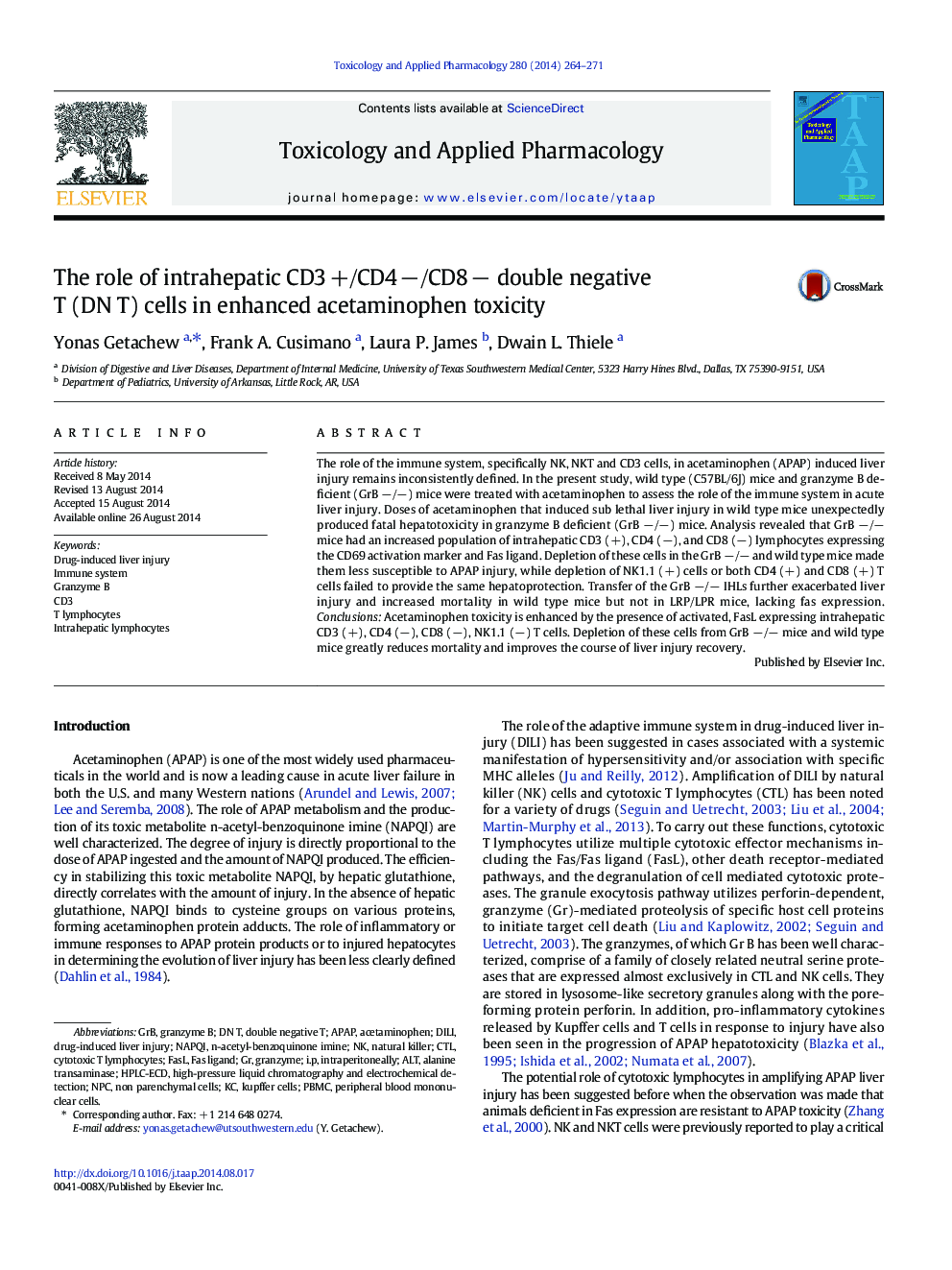| Article ID | Journal | Published Year | Pages | File Type |
|---|---|---|---|---|
| 5846224 | Toxicology and Applied Pharmacology | 2014 | 8 Pages |
Abstract
The role of the immune system, specifically NK, NKT and CD3 cells, in acetaminophen (APAP) induced liver injury remains inconsistently defined. In the present study, wild type (C57BL/6J) mice and granzyme B deficient (GrB â/â) mice were treated with acetaminophen to assess the role of the immune system in acute liver injury. Doses of acetaminophen that induced sub lethal liver injury in wild type mice unexpectedly produced fatal hepatotoxicity in granzyme B deficient (GrB â/â) mice. Analysis revealed that GrB â/â mice had an increased population of intrahepatic CD3 (+), CD4 (â), and CD8 (â) lymphocytes expressing the CD69 activation marker and Fas ligand. Depletion of these cells in the GrB â/â and wild type mice made them less susceptible to APAP injury, while depletion of NK1.1 (+) cells or both CD4 (+) and CD8 (+) T cells failed to provide the same hepatoprotection. Transfer of the GrB â/â IHLs further exacerbated liver injury and increased mortality in wild type mice but not in LRP/LPR mice, lacking fas expression. Conclusions: Acetaminophen toxicity is enhanced by the presence of activated, FasL expressing intrahepatic CD3 (+), CD4 (â), CD8 (â), NK1.1 (â) T cells. Depletion of these cells from GrB â/â mice and wild type mice greatly reduces mortality and improves the course of liver injury recovery.
Keywords
Related Topics
Life Sciences
Environmental Science
Health, Toxicology and Mutagenesis
Authors
Yonas Getachew, Frank A. Cusimano, Laura P. James, Dwain L. Thiele,
